Even if you don’t have a large garden, there’s still plenty of space to grow your vegetables. Corn is a great choice for small-space gardening, and grow bags make it easy to get started. Here’s how to grow corn in a grow bag.
![Growing Corn in Grow Bags [5 Easy Steps]](https://wraxly.com/wp-content/uploads/2022/04/Growing-Corn-in-Grow-Bags-5-Easy-Steps-1200-×-675-px.webp)
- What is a Grow Bag?
- Which Variety of Corn to Choose for Growing in Grow Bags?
- Recommended Corn Seeds
- How to Plant Corn in a Grow Bag
- When do you harvest sweet corn?
- How to Harvest Corn
- Benefits of Using Grow Bags over Traditional Gardening Methods
- Common Problems Associated with Growing Corn in Grow Bags
- FAQs
- Final Thoughts
What is a Grow Bag?
A grow bag is a type of container used for growing plants. These bags are typically made from lightweight, breathable materials such as fabric or coir, and have several advantages over traditional pots and planters.
- They are much easier to move around, making them ideal for small spaces or balconies.
- Grow bags provide excellent drainage and aeration for roots, promoting healthy plant growth.
- Grow bags can be reused multiple times, which makes them a more sustainable option than disposable pots.
The convenience of grow bags is great for those who don’t have much space, or just want to try out gardening.

Which Variety of Corn to Choose for Growing in Grow Bags?
Any gardener will tell you that choosing the right plants for your garden is essential to a successful harvest. This is especially true when it comes to choosing the right variety of corn to grow in grow bags.
While there are many different types of corn, only a few are well suited to growing in this type of container. One variety that has shown promise is ‘Sweetness’. This hybrid was developed specifically for growing in a limited space, and its compact size makes it a good choice for grow bags. ‘Sweetness’ also has a reputation for being easy to care for and producing high yields.
Another variety worth considering is ‘Golden Bantam’. This heirloom variety is one of the best-tasting corns and its 8-10 inch size is perfect for grow bags.
Recommended Corn Seeds
| Image | Title | Prime | Buy |
|---|---|---|---|
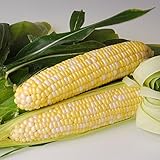 | Sweet Corn Sweetness F1 - Insect Guard Treated Seeds - 1,000 Seeds | Prime | Check Price on Amazon |
 | Burpee Ambrosia Sweet Corn Seeds 200 seeds | PrimeEligible | Check Price on Amazon |
 | Seed Needs, Peaches & Cream Sweet Corn (Zea mays) Bulk Package of 230 Seeds Non-GMO | PrimeEligible | Check Price on Amazon |
Top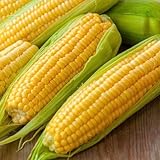 | Corn, Golden Bantam Yellow Corn, Heirloom, Non-GMO,50 Seeds, Delicious and Sweet Veggie | Prime | Check Price on Amazon |
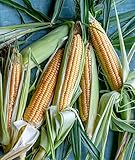 | Burpee Golden Bantam Sweet Corn Seeds 200 seeds | PrimeEligible | Check Price on Amazon |
 | Golden Bantam Corn- 50+ Heirloom Seeds | PrimeEligible | Check Price on Amazon |
How to Plant Corn in a Grow Bag
Once you have chosen the right variety of corn to grow, it’s time to plant it in your grow bag. The process is simple and can be done in just a few steps.
- Fill the grow bag with a well-draining potting mix. Add some compost or aged manure to the mix to help provide nutrients for your plants.
- Plant the corn seeds about 1 inch deep in the potting mix. Water well and keep the soil moist until the seeds germinate.
- Once the plants have emerged, thin them out so that there are only two or three plants per grow bag.
- Water the plants deeply once a week and fertilize them every two weeks with a high-nitrogen fertilizer.
- When the ears of corn are plump and the husks are green and dry, it’s time to harvest your crop.
When do you harvest sweet corn?
Many home gardeners enjoy growing sweet corn. While it is relatively easy to grow, harvesting the corn at the right time is crucial to getting the best flavor. Sweet corn is classified as a “baby food” because it is meant to be eaten when it is young and tender. As the corn matures, the sugar content starts to convert to starch, making the ears tough and unpleasant to eat. For this reason, sweet corn should be harvested when it is still in the milk stage.
The best way to tell if an ear of corn is ready to harvest is to puncture the kernels with your fingernail. If you see milky white liquid, then the ear is ready to be picked. If the liquid is clear, then the corn is too ripe and should not be eaten.
FURTHER READING
- The Biggest Mistakes You Can Make When Growing Tomatoes
- Planting Cucumbers in Grow Bags
- How to Grow Carrots in a Grow Bag
How to Harvest Corn
Once the ears of corn are plump and the husks are green and dry, it’s time to harvest your crop. To do this, simply grasp the ear of corn near the stalk and twist it gently. The ear will pop right off the stalk. If the stalk is still attached to the cob, cut it off with a sharp knife.
Store the fresh ears of corn in the fridge and enjoy them within a few days.
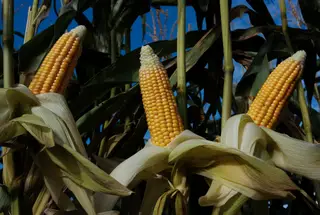
Benefits of Using Grow Bags over Traditional Gardening Methods
For those with a passion for gardening, there are many different methods to choose from. While traditional in-ground gardens are still popular, grow bags have become increasingly popular in recent years.
Grow bags offer several advantages over traditional gardening methods, making them a great option for gardeners of all skill levels. One of the biggest benefits of using grow bags is that they can be easily moved around. This is ideal for gardeners who want to experiment with different locations or who need to relocate their garden due to changes in their living situation.
Additionally, grow bags can be placed on patios, balconies, and other small spaces, making them perfect for urban gardeners with limited space.
Another advantage of using grow bags is that they improve drainage and air circulation, which helps to prevent disease and pests. And unlike in-ground gardens, grow bags can be used year-round, making them a great option for gardeners who live in cold climates.

Common Problems Associated with Growing Corn in Grow Bags
Just like any other plant, corn has specific requirements for optimal growth. In general, corn plants need full sun, well-drained soil, and consistent moisture levels. However, when growing corn in grow bags, there are several additional considerations to keep in mind:
- It is important to choose a bag that is large enough to accommodate the roots of the plant
- Choose a grow bag with good drainage and water retention properties.
- When it comes to watering, aim for consistency and avoid letting the soil dry out completely or become soggy.
With proper care, it is possible to grow healthy and productive corn plants in grow bags.
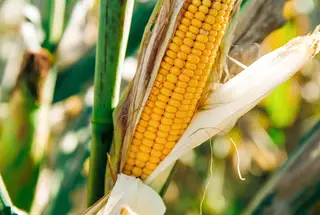
FAQs
Many people are interested in growing corn in grow bags, but there are a few things to keep in mind before getting started. Here are some frequently asked questions about growing corn in grow bags.
You will need about 2-3 gallons of soil for a grow bag that is 18 inches in diameter. Make sure to use a high-quality potting mix that is designed for vegetables.
It is a good idea to add some fertilizer when you plant the seeds or transplants. You can use a slow-release fertilizer or side-dress the plants with compost or manure during the growing season.
Corn plants need 1-1.5 inches of water per week, so it is important to water them deeply and regularly. You can use a drip irrigation system or a handheld watering can to provide the plants with enough water.
Yes, you can grow corn in cold climates, but you will need to take some extra precautions. Make sure to choose a grow bag with good insulation properties and place the bag in a sunny location. You may also need to protect the plants from frost.
Corn is a warm-season crop that thrives in sunlight. It requires about six to eight hours of direct sunlight per day to grow successfully. Too much shade can prevent corn from reaching its full potential. While corn plants can tolerate some partial shade, they will produce fewer ears of corn if they do not receive enough sunlight. Additionally, ears of corn exposed to insufficient sunlight are often smaller and less sweet than those that receive plenty of sunlight.
Though it may seem like corn pops up overnight, it takes quite a bit of time to grow. Corn is a warm-season crop, which means that it needs temperatures between 65 and 95 degrees Fahrenheit to germinate and grow. Once the seeds have been planted, they will usually sprout within 7-10 days. However, the plants will continue to grow and mature for several weeks before they are ready to harvest. In total, it usually takes about 75-85 days for corn to go from seed to full maturity.
Final Thoughts
Corn is particularly well-suited to small-space gardening, and grow bags make it simple to get started. Follow the guidance we’ve shared above to ensure your corn plants thrive in a grow bag. With a little bit of effort, you’ll be able to enjoy fresh ears of corn from your garden this summer!

Darrell has a passion for gardening that he inherited from his father. Go here to read more about the influence his father played in his love for gardening. If you want to send Darrell a quick message, then visit his contact page here.
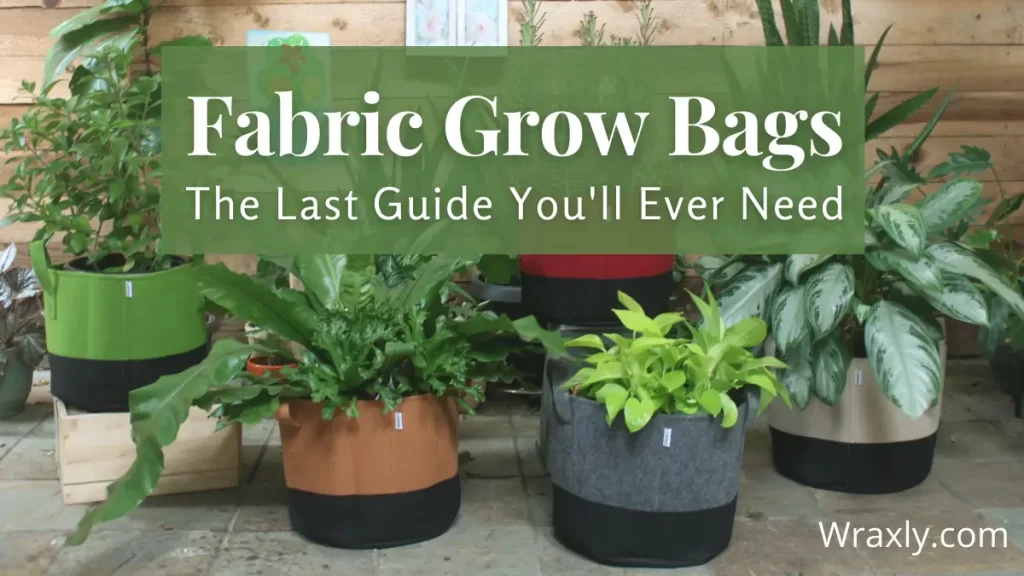
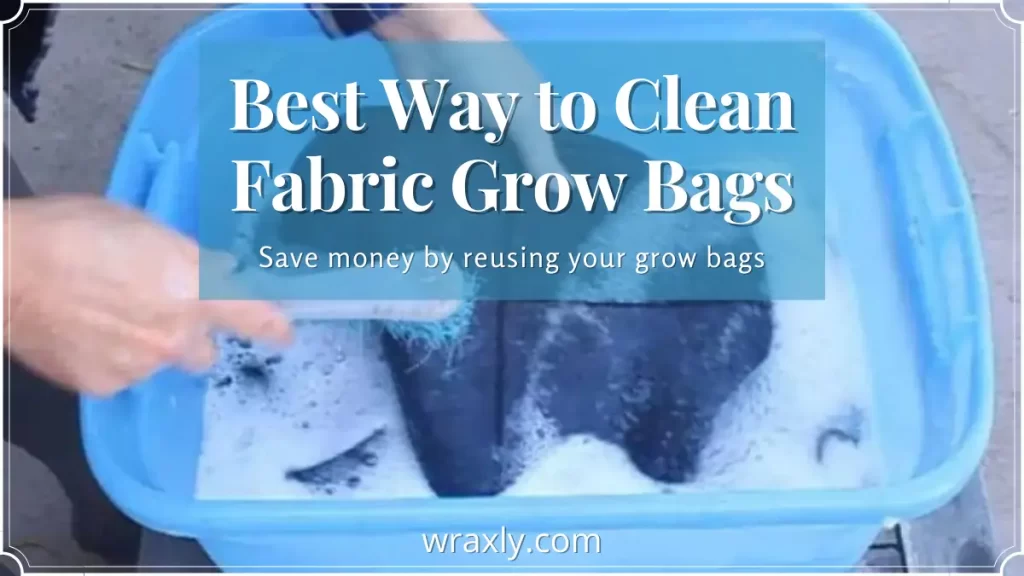
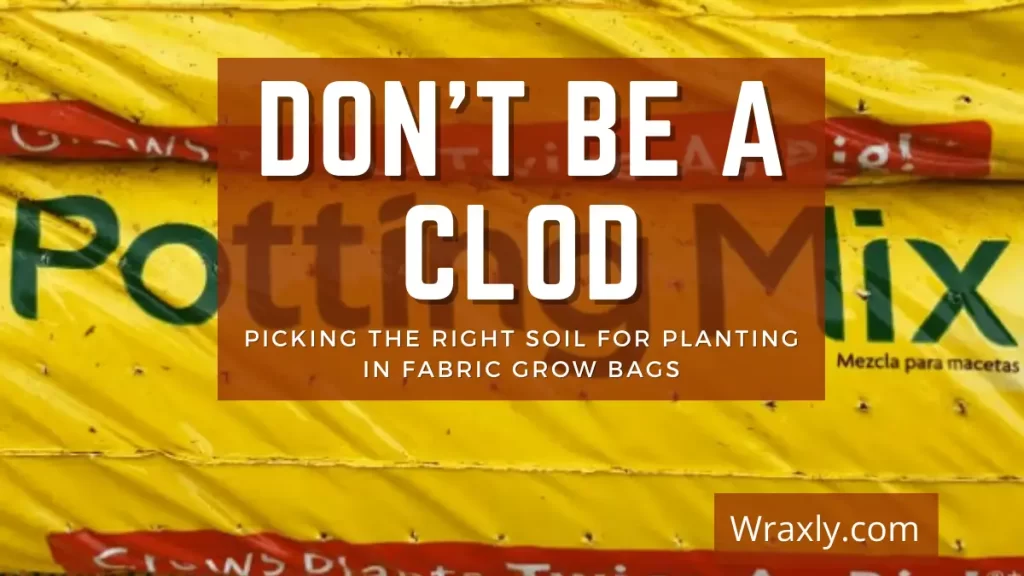
![Container gardening for beginners [Buying guide]](https://wraxly.com/wp-content/uploads/2021/02/Container-gardening-for-beginners-Buying-guide-1200-1024x576.webp)